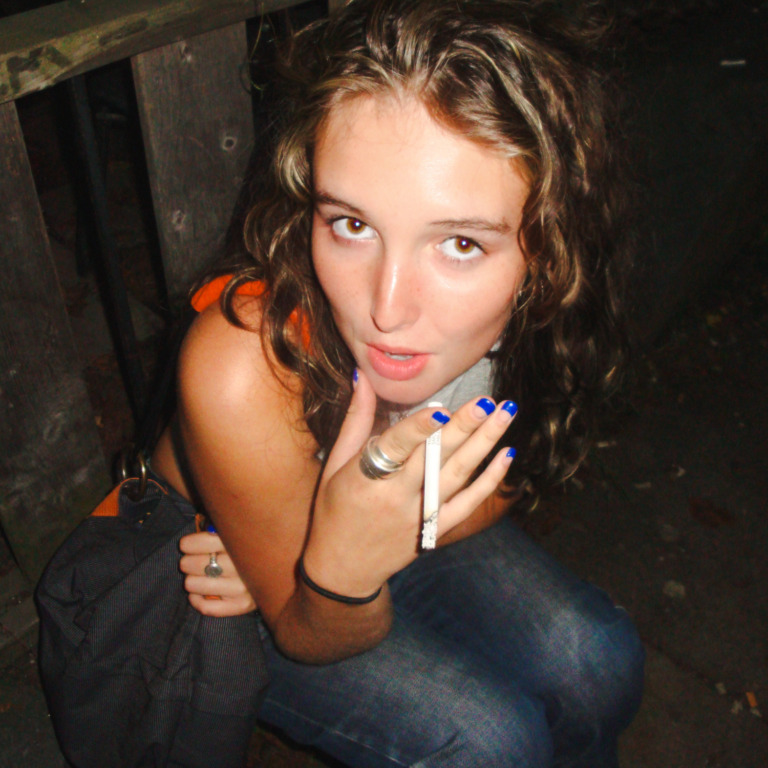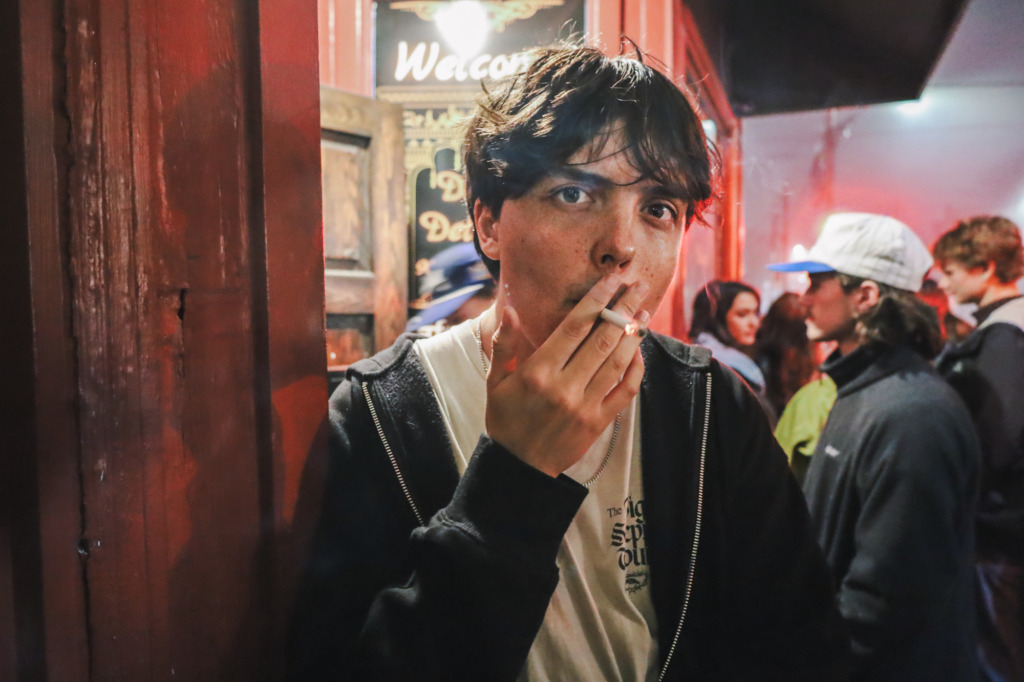
Just a drunk cigarette? The nouveau smoking epidemic
What doesn’t kill you makes you cooler
In an era dominated by green smoothies, fitness trackers and wellness culture, worldwide trends show cigarettes are becoming almost as outdated as payphones and dial-up internet. Yet despite decades of health warnings, the glow of lighters still flicker as smoke curls into the Halifax air. Cigarettes are quietly — and worryingly to medical experts — making a resurgence among Nova Scotia’s youth, and some students’ logic seems to be: What doesn’t kill you makes you … cooler?
Nova Scotia has the highest smoking rates among teens aged 15-19 and young adults aged 20-24, according to a 2025 study from Prezler Injury Law. While the national teen smoking rate is 4.2 per cent, Nova Scotia more than doubles it, with a teen smoking rate of 10.7 per cent.
“Smoking is one of those unambiguous things that is clearly bad for your health,” says Dr. Christopher Labos, a cardiologist and epidemiologist at McGill University.
However, the reality on campus and in downtown Halifax tells a different story.
Issac Taylor, a Nova Scotia Community College student, lit his first cigarette at age 12. Now, almost 21, he’s spent nearly half his life caught between smoking cigarettes and vaping — always finding his way back to smoking.
“I probably smoke a pack a day on the weekends, and during the week, probably about a third to half a pack a day,” Taylor says.
He’s worried about where the habit will take him.
“I have tried to quit multiple times. It’s just not an easy thing to do.”
That difficulty is familiar to Dr. Andrew Pipe, a professor in the faculty of medicine at the University of Ottawa and former chief of the Division of Prevention and Rehabilitation at the University of Ottawa Heart Institute.
“It’s very important to understand the role that addiction plays even among 13, 14 and 15-year-olds,” Pipe says. “Individuals are facing a lifetime of addiction to a highly addictive drug and giving enormous sums of money to an industry which wants nothing more than for them to become, and stay, addicted.”
For many young smokers, it’s not just an addiction — the real appeal is connection.
On a typical night downtown, Mitchell Ralph, a third-year commerce student at Dalhousie University, says groups of students can be found outside bars, huddled together for smoke breaks.
For him, cigarettes are social currency: a moment of camaraderie, a way to meet new people and a ritual to “cap off the night.”
Pipe says this isn’t surprising.
“Smoking emerges in groups of young people who very often feel isolated, removed or even unique,” he says. “Smoking becomes a commonality they experience amongst each other. So they describe it in social terms.”
Emma Drynan, a fourth-year sustainability and sociology student at Dalhousie, says, “There’s a difference between people who are heavily addicted and people who want a cigarette when they’re drunk.”
But medical experts warn the line is blurrier than students realize.
Pipe says dependence can set in shockingly fast.
“It only takes about 48 to 72 hours of inhaling tobacco smoke to become addicted to nicotine,” he says.
Some students, like Taylor, describe smoking as a stress reliever and coping mechanism for anxiety. But according to Labos, that’s a common misconception.
“When nicotine levels fall, the symptoms of withdrawal become somewhat unpleasant,” he says. “As you inhale nicotine again, those symptoms are eased, and that’s perceived pleasurably or as a way of relieving stress. What they are really experiencing is the extinction of the symptoms of withdrawal.”
Still, some students dismiss the risks. High school health classes may not have driven the message home, but the graphic warnings on cigarette packages make the dangers impossible to ignore. The problem isn’t a lack of awareness among some youth, but rather naivety. And the cost of ignorance is both expensive and deadly.
“If you are smoking until you’re 25, you should be fine,” says Shamus McBurney, a commerce student at Dalhousie. “We’re young and able-bodied. The long-term effects are only if you’re chain-smoking for years and years. If you’re not, you’ll be fine.”
Pipe disagrees. “If you’re smoking regularly, you will become addicted,” he says. “And it’s typical of young people to want to deny that addiction.”

So, what’s sparking this resurgence?
Carolyn Baglole, a professor in the department of medicine and respiratory researcher at McGill University, says national cigarette use has reached historic lows.
“Smoking rates amongst people 15 and over have steadily declined over the past number of decades,” she says.
Advertising restrictions have long shrunk tobacco’s cultural footprint, yet cigarettes still manage to infiltrate the lives of young Nova Scotians.
What’s different today, compared to the chain-smoking era before the 1964 U.S. Surgeon General’s report first linked smoking to cancer, are the new players in the mix. For some, the rise of vaping and e-cigarettes has made cigarettes more appealing.
“Smoking is definitely more authentic than vaping. It’s become an aesthetic,” says Taylor. “I’ll even post a picture where I have a beer and a cigarette in hand to justify it to myself.”
Part of that justification, he admits, comes from a sense of certainty. The dangers of cigarettes are well-researched, he argues, while the long-term effects of vaping remain murkier and too early to tell.
Baglole studies vaping alongside the mechanisms of lung disease and tobacco smoke.
“We don’t know what the long-term effects will be,” she says. “But the research that we’ve put out on this topic suggests that vaping is not good for you.”
For Taylor, smoking feels less like a gamble and more like a calculated risk, even if the odds are stacked against him.
“Some smokers live to 105 without any health complications,” he says. “Some people at 35 get crazy diseases.”
Medical experts insist there’s nothing calculated about it. “It’s not that it’s the lesser of two evils,” says Baglole. “Just because we don’t know what it’s doing doesn’t mean you should use something that is knowingly bad for your health.”
“There is no such thing as a safe cigarette,” Labos says. “You think you’ll be able to stop whenever you want, but you won’t. The earlier you start, the greater the risk this is going to turn into a lifelong habit.”
The bottom line remains unchanged, even amidst the resurgence.
“Quitting smoking, or even better, never starting it to begin with, is the best thing you can do for your health,” says Labos.






